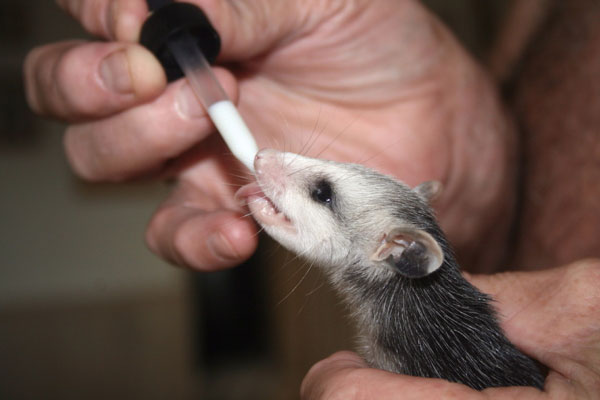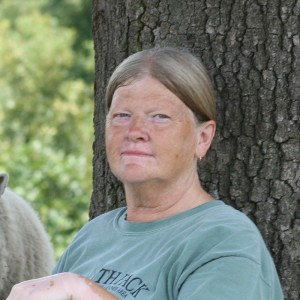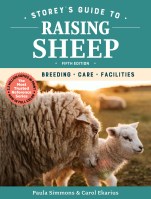Playing Possum, Part 2: Life with Rescued Joeys
Author Sue Weaver is one month into life with a passel of rescued baby opossums, one of whom seemed destined to become a permanent member of the household.

It’s been a month since we became surrogate parents to seven little opossums whose mama was killed by our livestock guardian dogs. Since then we’ve learned a thing or two about what makes baby possums tick.
Opossum babies, called joeys, can live for a time in a dead mother’s pouch, but eventually, toxins from their dead mother’s milk enters their systems and once that happens, they aren’t easy to save. We were lucky. We found our brood within an hour or two of their mama’s death, so they were in great shape. They were fairly mature, partially furred with eyes open wide, so we brought them in and set them up in a blanket-lined plastic tote resting on a heating pad. Then we began searching for a wildlife rehabber who could take them (you can read about how that turned out here).
In the meantime our daughter, Robyne, who volunteered for years at a wildlife rehab center in Indiana and who raised several litters of joeys for them, told us to check Arkansas wildlife regulations and if it’s legal, she’d help us raise these to releasable age. Luck smiled upon us again. Arkansas allows the keeping of up to six opossums (or raccoons, coyotes, squirrels, or any other nongame native wildlife) as pets. We were one joey over legal but we decided to persevere. Then we checked their sexes and named them: Hissy, Sissy, Missy, Krissy, Prissy and Pogo (Pogo is the only male).

Their first few meals were warm, raw goat milk fed with an eyedropper. They loved it. And they seemed happy in their roomy plastic tote with the top off. But that first night the baby we called Lissy somehow crawled out and fell from the tote, which was on a table at the time, injuring her right back leg seriously enough that she dragged it behind her. We quickly crafted a screened top to go on the tote.
Then we began working and massaging Lissy’s back and leg every two hours from dawn to bedtime. We also asked friends for prayer and to send healing her way. She slowly improved and in two weeks her paralyzed leg was good as new.
However, in the meanwhile Lissy bonded with us — a bad thing when raising baby wildlife for release, so we decided she’d become our house possum.

Yes, house possum. A surprising number of rehabbers and possum aficionados raise non-releasable opossums as indoor pets. Pluses: bonded possums are sweet and affectionate, adults are about the size of an average cat and they naturally use a potty pan. A major minus: they have to be fed a specific diet to avoid a crippling malady called Metabolic Bone Disease (MBD) and many captive opossums are frustratingly picky eaters.
At that point I discovered a Facebook group called Opossum Care and Rescue. Their archived files and friendly advice helped us work out a sensible diet for our joeys.
Then we met a new friend who has rehabbed possums in the past and who recently lost her house possum to old age. She took two of our girls and I breathed a sigh of relief because now we are legal.

So, Miss Lissy is now a permanent member of the Weaver household. Her remaining siblings will be released when they weigh two pounds each. They’re growing fast but they’ll be with us a good while longer. We enjoy them a lot. If you’d like to make this kind of happy ending for baby possums like Lissy and her kin, here are some things you can do.
What can you do?
- If you see an opossum that was recently killed on the highway, stop. Take her to the side of the road and check for joeys in her pouch. Her pouch is a vertical slit on her belly; you can’t miss it, especially if there are joeys inside. Pouch-dwelling joeys remain attached to a specific nipple and that nipple has a bulb on the end to keep it in its joey’s mouth. Be very careful as you remove the babies, so you don’t injure their necks. If the joeys are very tiny (remember: they’re bumblebee-sized when they’re born) and you can get them to a wildlife rehabber right away, take the dead mama to the rehabber with the joeys still in place. Keep detached joeys warm unless they’re large and fully furred and take them to a rehabber as quickly as you can.
- Keep in mind that older joeys cling to their mother’s back after they’re old enough to leave the pouch. If you find a road-killed possum, look around to see if there are juveniles in the area that may have scattered when their mama was hit.
- If you can’t find a rehabber right away, Esbilac, powdered puppy milk available at most pet stores, is a decent substitute for opossum milk. Tiny joeys must be tube-fed by an experienced rehabber but older babies lap formula from the end of an eye dropper. Don’t try to syringe it into their mouths.
- Pouch joeys don’t eliminate by themselves; mothers lick their babies’ nether parts to stimulate them to pee and poop. Use a warm, damp cloth or cotton swab to lightly stroke babies’ tummies and bottoms before or after meals to help them perform.
- Be informed before deciding to keep a joey as a pet. It’s illegal to keep wildlife pets in many states and it’s definitely not for the faint of heart. Join the Opossum Care and Rescue group on Facebook and get the skinny before you commit. If you do an Internet search, be aware that there’s a lot of conflicting and harmful, extremely dated advice online. The National Opossum Society website is a good source of reliable information.

In case you missed it: Part 1 Playing Possum
And if you’d like to stay abreast of baby Lissy’s doings, check out her Lissy Possum Facebook Page. Raising a baby possum is an adventure and we’d love to share it with you.
Learn More
Whether you want to the make most of a small plot of land or add diversity to a large farm, raising miniature livestock can be a fun and profitable experience. With expert advice on choosing a breed that suits your needs, Sue Weaver shows you how to house, feed, and care for miniature goats, sheep, donkeys, pigs, horses, cattle, and llamas. You’ll be inspired by profiles of successful breeders as you learn everything you need to know to keep your miniature livestock healthy and productive.











